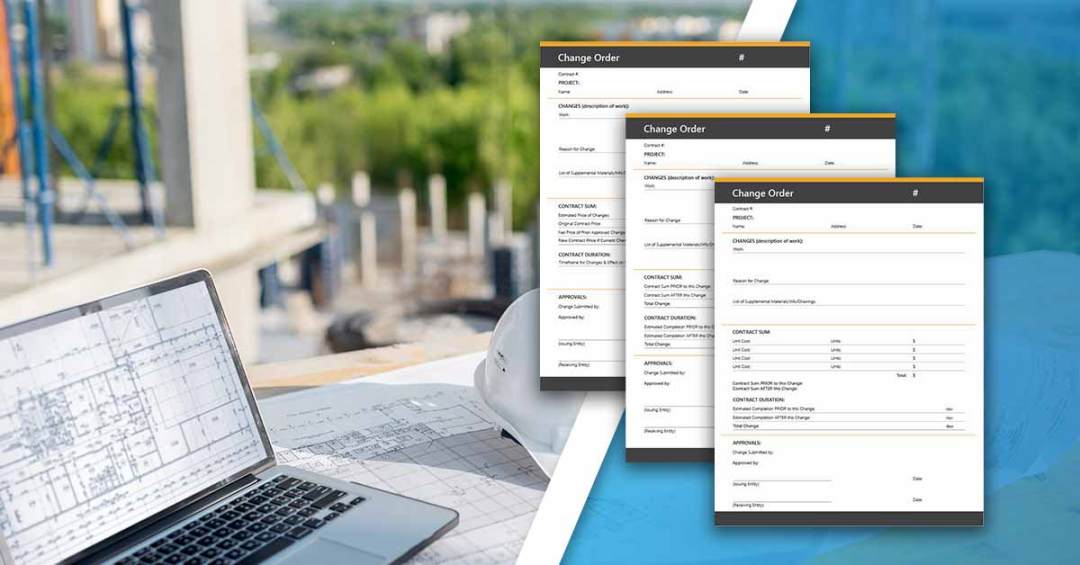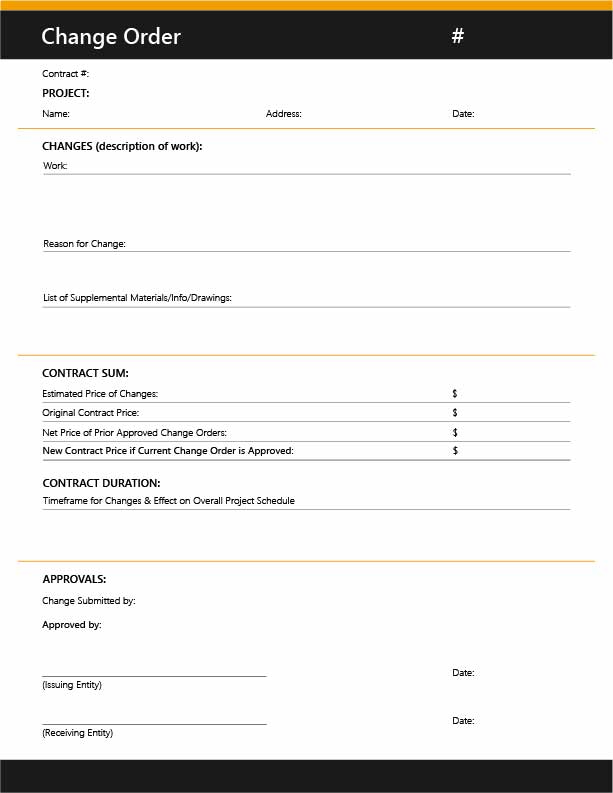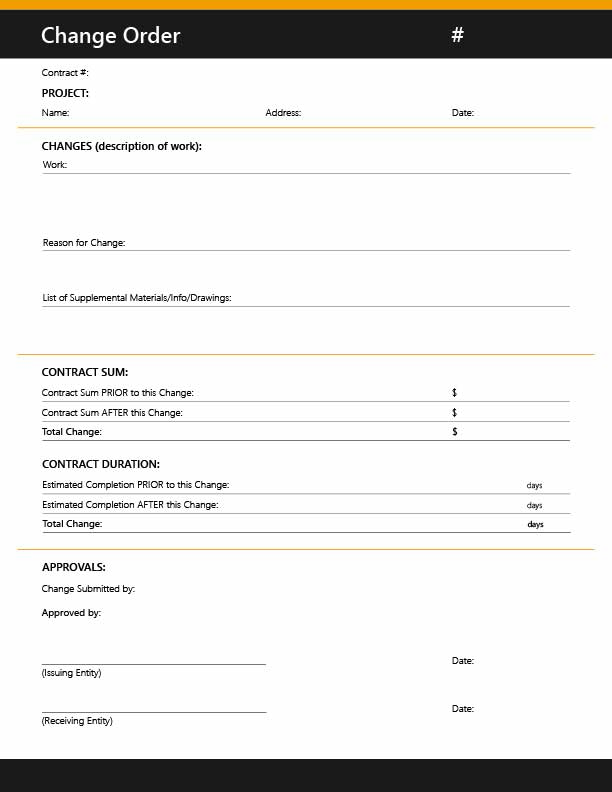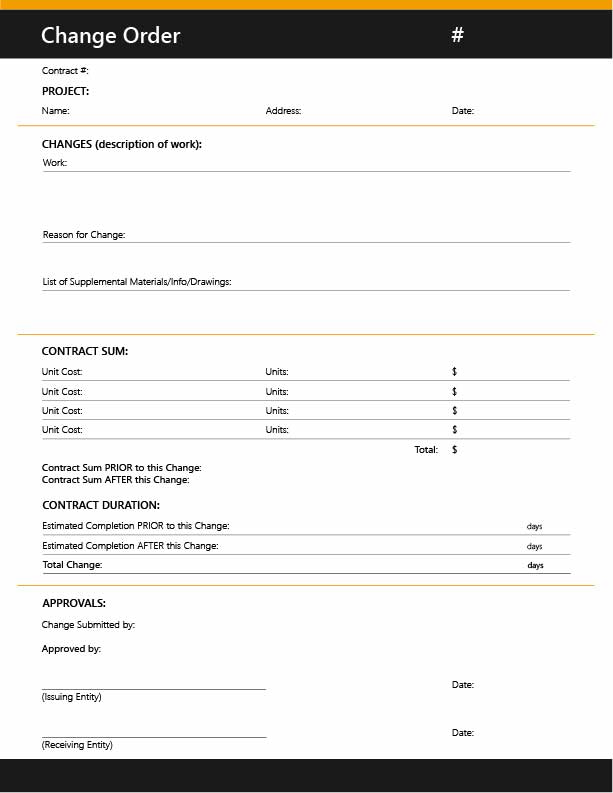Are you an Asset Owner or General Contractor looking for a great change order template? If so, you have come to the right place. Click here to skip to our various change order templates, uniquely customized depending on your contract type.
Construction work is often characterized by complexity and uncertainty. Projects rarely go according to plan, are rarely completed on time, and rarely meet projected budgets. In a work environment like that, change is inevitable.
The best way to manage change in construction to ensure clear communication and prevent unnecessary legal action is by issuing change orders to outline requirements for each relevant stakeholder. This blog explores various change order templates that can be used for just that, from a generic change order template, to change order templates specific to fixed price and cost-plus contract types.
Standardized Construction Change Order Template
Looking for a change order template that can easily be customized or formatted to suite your unique needs? Look no further.
Download our FREE construction change order template now!
Change Order Template for Fixed Price Contracts
Fixed price contracts (otherwise known as lump sum or fixed sum contracts) are a popular construction contract type, whereby the General Contractor completes a project for an Owner at an agreed upon price and bears the bulk of the risk if a project exceeds budget/timeline.
What you need to know about fixed price contracts and change orders:
- Change orders in fixed price contracts generally don’t include price or costing estimates for the unit costs involved in the proposed changes.
- It can be much more difficult to negotiate changes to the scope of work being that there is a contracted rate for the work, any cost increases, labour issues, or material shortages are typically the responsibility of the General Contractor.
- Change orders can be detrimental to General Contractors if there is substantial new work or communication required because of the change order – unless additional earning provisions are outlined in the order.
- Not all change orders impact cost. Some change orders can be as simple as approving changes to architectural renderings.
Download our FREE change order template for fixed price contracts now!
Download editable PDF change order template for fixed price contracts
Download Google Doc change order template for fixed price contracts
Change Order Template for Cost-Plus Contracts
Cost-plus contracts in construction operate quite different. Under a cost-plus contract, the Asset Owner will pay the General Contractor the actual costs paid for labour and materials, as well as an additional fee for the management of the project. This additional fee can be calculated as a percentage of total cost, a set fee, an hourly rate, or some combination of the three.
What you need to know about cost-plus contracts and change orders:
- Less work is pre-determined, which means that General Contractors should anticipate more changes throughout the project, and more change orders.
- Change orders are generally friction-free under a cost-plus contract, being that they simply extend billable time for the General Contractor.
- Cost-plus contracts generally offer a greater degree of transparency between the General Contractor and the Asset Owner. Due to this, Asset Owners can often benefit from any discounts the General Contractor receives from Subcontractors or materials suppliers.
Download our FREE change order template for cost-plus contracts now!
Download editable PDF change order template for cost-plus contracts
Download Google Doc change order template for cost-plus contracts
Change Order Template for Time and Materials Contracts
Time and materials contracts are generally used on construction projects that have little to no predetermined scope. These are viewed as the most flexible construction contract type; more of a “work as-we-go” construction process.
In other words, without a contracted or defined scope of work, change orders are rarely issued under time and materials contracts. Instead, contractor flexibility and willingness to change plans is expected on an ongoing basis, and payment simply reflects the body of work completed by the contractor.
If you are using a hybrid contract approach and have a time and materials component to your contract, then it is advised that you use the cost-plus change order template, above.
Conclusion
Regardless of your contract type or your role in the construction process, you need to be ready and willing to accommodate change. Though it can be difficult, change is a necessary evil in the fight to ensure that projects are completed at the highest quality and satisfy all stakeholders involved.
myComply is the leading solution for Asset Owners and General Contractors that want to improve their jobsite transparency, by tracking worker certifications, monitoring time and attendance, implement access control systems, and unlock powerful workforce data. If you’d like to find out more, then book some time with a product expert today!






